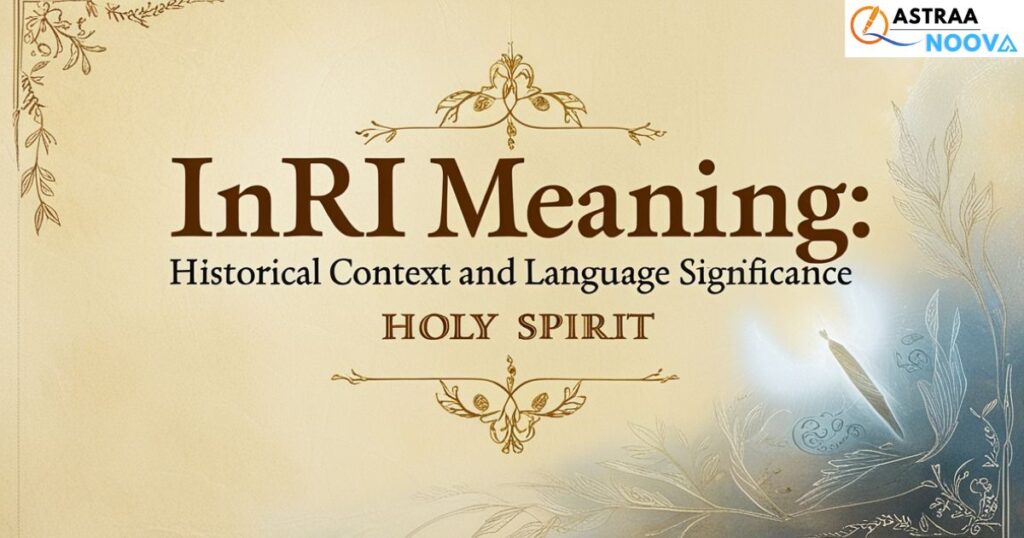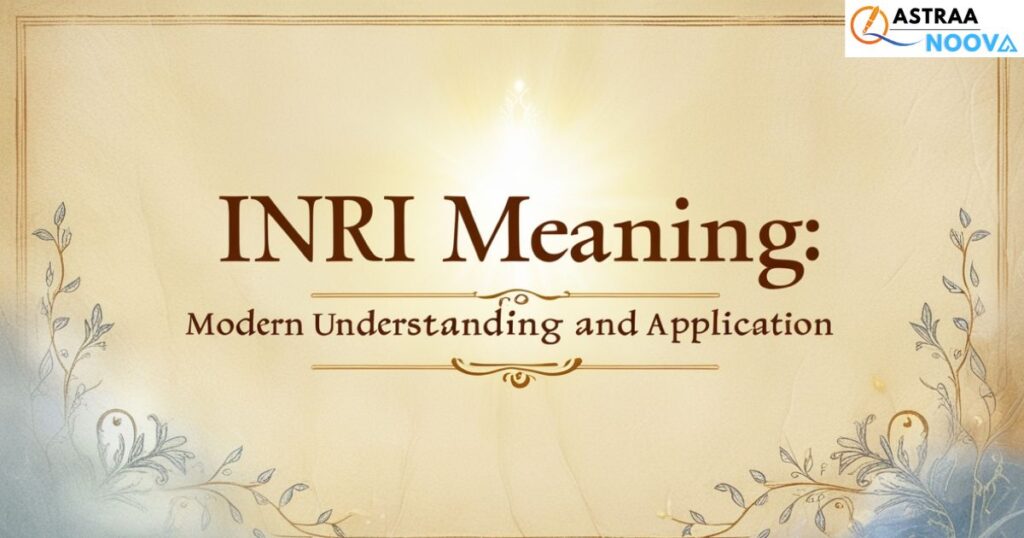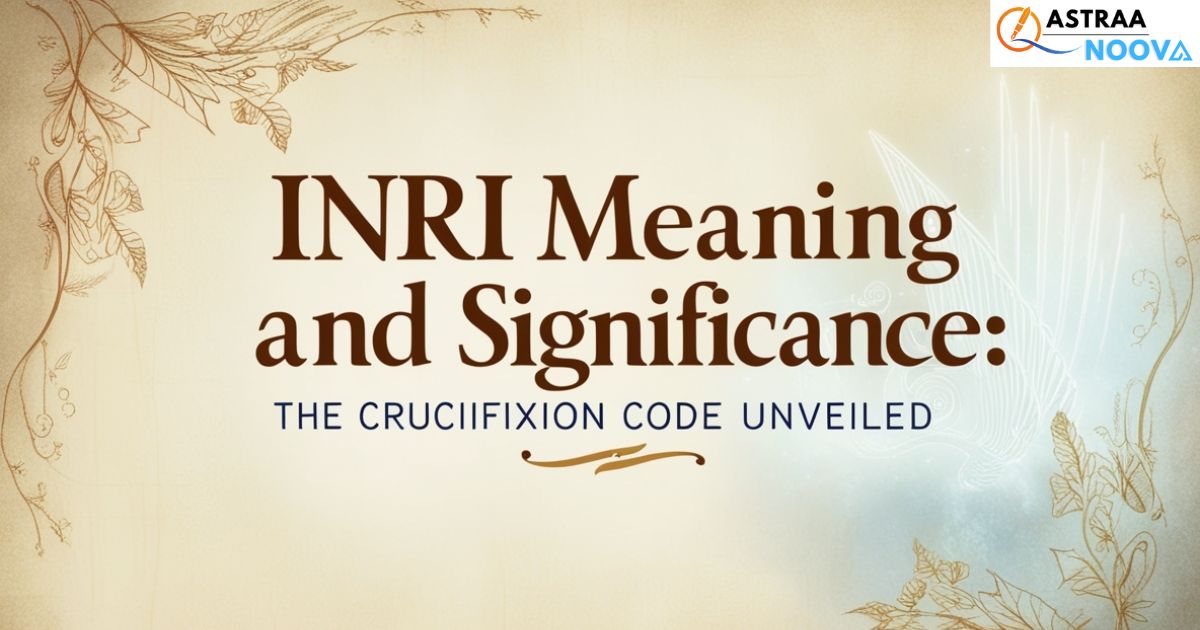Have you ever looked at a crucifix and wondered about the letters “INRI” above Jesus’ head? This powerful inscription carries deep meaning that resonates through centuries of Christian faith and history. Today, we’ll uncover the rich significance behind these four letters and their enduring impact on religious understanding.
Many believers and scholars alike have pondered the multilingual nature of this inscription and its profound theological implications. The story behind these letters connects ancient languages, Roman customs, and divine prophecy in a remarkable way that continues to inspire faith and reflection.
Let’s explore how this simple acronym encapsulates one of history’s most significant moments and what it means for believers today. We’ll delve into historical records, biblical accounts, and theological insights to understand its full significance.
INRI: Understanding the Sacred Inscription
When Pilate ordered the crucifixion of Jesus, he commanded a sign to be placed above the cross. According to John 19:19, this inscription read “JESUS OF NAZARETH, THE KING OF THE JEWS” This declaration was written in three languages: Aramaic, Latin, and Greek.
The Latin phrase “Iesus Nazarenus Rex Iudaeorum” gives us the letters INRI. This inscription served multiple purposes in its time. Roman authorities used such signs to declare the supposed crimes of the condemned, but in this case, the words carried far deeper significance.
Mark and Matthew refer to this inscription as an “accusation,” while John calls it a “title.” This distinction highlights the dual nature of the inscription its legal function in Roman justice and its prophetic role in declaring Jesus‘ true identity as King of the Jews.
Read Also >> Where Was Jesus Crucified? Unveiling the Sacred
Jesus Crucifixion Site
Historical Context and Language Significance

In ancient Rome, crucifixion served as both punishment and public warning. The practice of placing inscriptions above the condemned was common, but Jesus‘ case stands unique in its trilingual presentation and profound declaration.
The choice of three languages reflected the cultural diversity of Jerusalem at that time. Aramaic served as the common language of the Jewish people, Greek dominated international commerce and culture, and Latin represented Roman authority.
This linguistic trinity ensured that virtually everyone passing by could read and understand the declaration. What Pilate intended as mockery became a powerful proclamation of Jesus‘ sovereignty across cultural and linguistic boundaries.
Theological Significance and Divine Providence
The inscription’s irony lies in its unintended truth. While meant to ridicule Jesus‘ claims, it actually proclaimed His legitimate title as King of kings and Lord of lords, as later affirmed in Revelation 17:14 and Revelation 19:16.
Through divine providence, Pilate‘s words fulfilled prophecies about the Messiah‘s universal kingship. The multilingual inscription foreshadowed how the message of salvation would spread to all nations and peoples.
Colossians 2:14 tells us that Jesus “blotted out the handwriting of ordinances that was against us.” The very inscription marking His death became a symbol of victory over sin and death.
Cultural Impact Through History
Throughout Christian history, the INRI inscription has inspired countless works of art, literature, and theological reflection. Its presence on crucifixes serves as a constant reminder of Jesus‘ sacrifice and sovereignty.
Artists and iconographers have traditionally incorporated these letters into their depictions of the crucifixion, making them instantly recognizable symbols in Christian art. This visual tradition helps preserve the historical and theological significance of the inscription.
The universal relevance of this inscription continues to speak to believers across cultural boundaries, much as it did in its original trilingual form. It reminds us that Jesus‘ message transcends cultural and linguistic barriers.
Why This Matters Today
Understanding the INRI inscription deepens our appreciation of how historical events and divine purpose intersected at the crucifixion. It reminds us that what appeared as defeat became the greatest victory in human history.
The multilingual nature of the original inscription speaks to the universal scope of Jesus‘ mission as Savior. His sacrifice wasn’t limited to one people or culture but extended to all humanity, offering salvation to everyone who believes.
This historical detail carries profound implications for contemporary faith. It shows how God can use even hostile actions to declare truth and accomplish His purposes, transforming an instrument of shame into a symbol of hope.
Modern Understanding and Application

Today’s believers can draw several practical lessons from the INRI inscription. It teaches us about standing firm in our faith even when faced with mockery or opposition, just as Jesus did during His crucifixion.
The trilingual proclamation reminds us of our call to share the gospel across cultural and linguistic boundaries. Just as the inscription spoke to different language groups, we’re called to communicate God’s love to all peoples.
This ancient inscription continues to challenge and inspire modern followers of Jesus. It prompts us to consider our response to His kingship and what it means to live under His authority today.
Think About It
When we contemplate the INRI inscription, we’re invited to consider how Jesus‘ kingship impacts our daily lives. His role as King of kings calls for our allegiance and transforms our perspective on authority and power.
The inscription’s declaration of absolute truth amid political maneuvering reminds us to stand firm in our convictions. Like the sign that proclaimed truth even through attempts to mock it, we’re called to maintain our witness in all circumstances.
The universal scope of this proclamation challenges us to extend our vision beyond cultural boundaries. Just as the message was accessible to all who passed by, we should consider how we can make Christ’s love accessible to different cultures and communities.
Conclusion
The INRI inscription stands as more than just four letters above the cross. It captures a pivotal moment where human plans and divine purpose intersected, where an instrument of shame became a declaration of glory. Through languages, cultures, and centuries, these letters continue to remind us of Jesus‘ sacrifice, sovereignty, and saving love for all humanity. As we reflect on this inscription today, we’re invited to embrace its truth and live in light of its reality.
Read Also >> What Ethnicity Was Jesus? Discover His True Origins
FAQ’s About INRI
What does INRI mean to Catholics?
For Catholics, INRI represents the Latin phrase “Iesus Nazarenus Rex Iudaeorum” meaning “Jesus of Nazareth, King of the Jews.” This inscription holds deep spiritual significance as it affirms Jesus’ kingship and appears on crucifixes in Catholic churches worldwide.
Who put INRI on the cross?
Pontius Pilate ordered the placement of this inscription above Jesus during the crucifixion. According to biblical accounts, specifically John 19:19, Pilate had this title written in three languages: Aramaic, Latin, and Greek.
Why is Jesus King of the Jews?
Jesus’ title as King of the Jews stems from His divine lineage through King David and fulfillment of Old Testament prophecies. This title recognized His spiritual and messianic kingship, though it was initially used mockingly during His crucifixion.
What is INRI in Christianity?
In Christianity, INRI represents both the historical inscription placed on Jesus’ cross and a profound declaration of His identity. Christians view it as a testimony to Christ’s kingship and sovereignty, transcending its original use as a criminal’s charge.
What language did Jesus speak?
Jesus primarily spoke Aramaic, the common language of first-century Palestine. He likely also understood Hebrew for religious purposes and possibly some Greek, which was widely used for trade and communication in the Roman Empire.
Read Also >> How Old is God According to the Bible?

Multilingual faith educator exploring connections between language, spirituality, and dream symbolism.


















